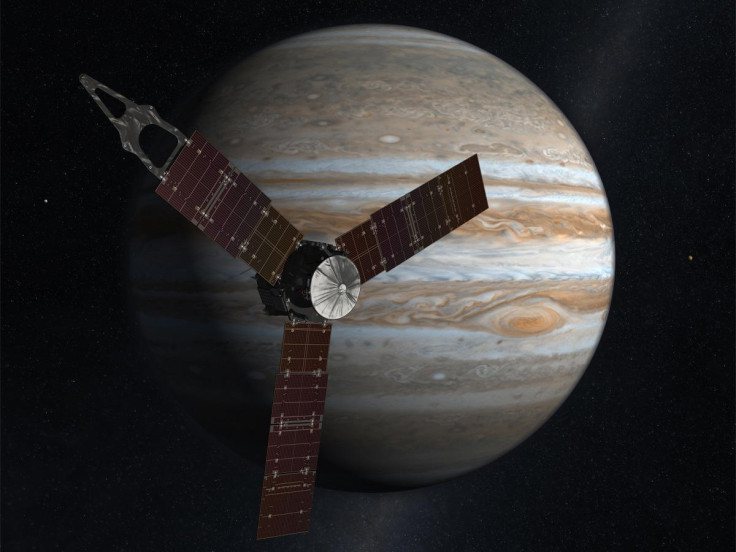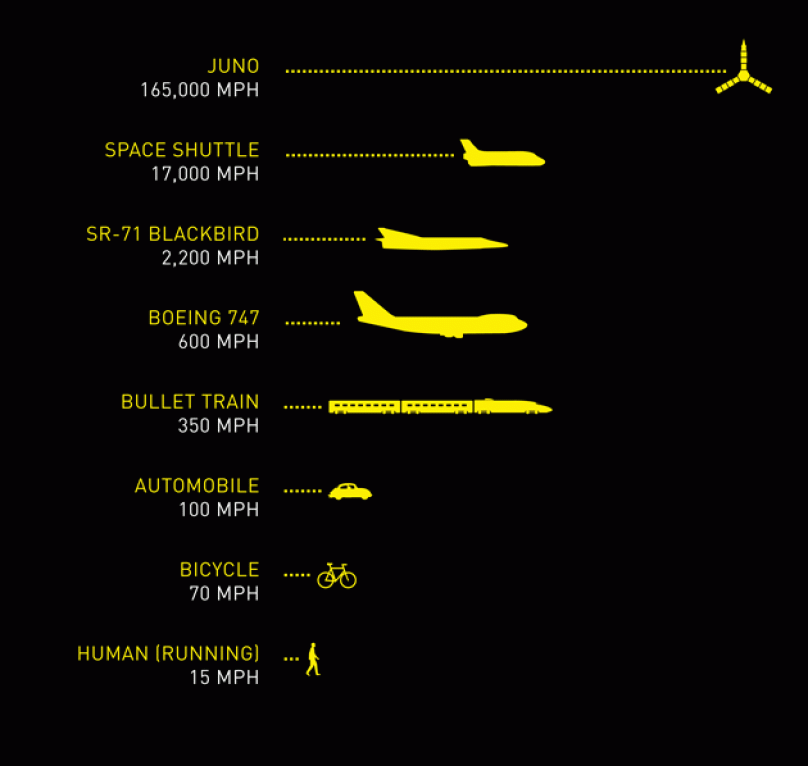Juno mission: How Nasa will manoeuvre 250,000 km/h spacecraft into Jupiter's orbit
Almost five years after launching, Nasa's Juno spacecraft will arrive at Jupiter on 4 July. It will be the fastest man-made object ever created, travelling over 250,000km/h (155,000mph). And at this point, Nasa scientists will prepare to manoeuvre it into Jupiter's orbit.
The Juno mission will for the first time allow scientists to look beneath Jupiter's dense clouds to find out more about the largest planet in our Solar System. Scientists hope to learn about the formation and evolution of the planet.
Scott Bolton, principal investigator on the Juno mission, told IBTimes UK, that so far, everything has gone very well: "We've had a good voyage there. The spacecraft has behaved well, we've learned how to fly it, we've gotten ready for when we arrive."
Over the next month, the team will be re-checking equipment to ensure everything is in order for entering the planet's orbit – the make or break point of the mission.
"It's a high technology piece of equipment so there's lots of things that could go wrong. There's nothing that's a particularly high risk event that we're concerned about between now and 4 July. The activity that happens on 4 July – the actual orbital insertion event – is very high risk. It's the highest risk event left in the entire mission. The only thing higher risk was the launch from Earth itself," said Bolton.

During its voyage to Jupiter, Juno has clocked speeds of over 257,000 km/h. On arrival, the spacecraft will have to "slam on the breaks", which involves firing its main engine in reverse.
"We have to slow down. We are going really fast. We'll be moving over 250,000 km/h. We have to basically fire a rocket – sort of reverse thrust of a jet engine when it's landing. We have to fire that and slow down so we can make a transition from being in orbit around the sun to being in orbit around Jupiter. If we don't do that just right, you just fly right by and you lose everything," said Bolton.

He said they have studied a number of different scenarios for what would happen if Juno ends up in a "weird orbit", but that essentially, there is "no second chance". The rocket will burn for around 40 minutes. During this time, the team will not be able to help the spacecraft because of the distance from Earth.
Instead, the spacecraft has an intelligent computer that has fail-safes and back-ups: "It has to do everything itself because by the time it tells us there's a problem, it's too late. By the time it takes the signal to get to Earth, we've blown by ... It's a very tense period because the mission is riding on this."
Bolton said that to make matters worse, the manoeuvre into Jupiter's orbit is one of the "most hazardous environments in the entire solar system". "It's got the strongest magnetic field, it has dust and rings and rocks around it that we can't really see. We can't avoid them, we're hoping we don't get hit by anything."
Furthermore, Jupiter has the most severe radiation in the entire solar system and the spacecraft (which is about the size of a basketball arena) is spinning really fast. This means there was no way to re-create the environments it would be experiencing – so this part of the mission could not be tested.
Finally, the spacecraft will have to be turned into the right position: "That's one of the more critical events. We actually have to turn it in the right direction so the rocket motor is facing forward. When I do that I have to turn the solar arrays away from the Sun. Then we're on batteries, we're no longer getting power from the sun. We're on battery power, so the rocket motor has to burn for just the right amount of time and then turn the spacecraft back to the sun before we run out of battery."
Regardless, Bolton is optimistic. "There are a lot of things to worry about it. A lot of it is very high risk. But if you don't push the envelope and take chances then you don't get to score the big wins.
All being well, the Juno spacecraft will orbit Jupiter for 20 months until February 2018, providing scientists with decade's worth of data from which to learn. At this point, it will be commanded to dive into Jupiter's atmosphere, where it will disintegrate and burn up – becoming part of the plant it was created to study.
© Copyright IBTimes 2025. All rights reserved.






















